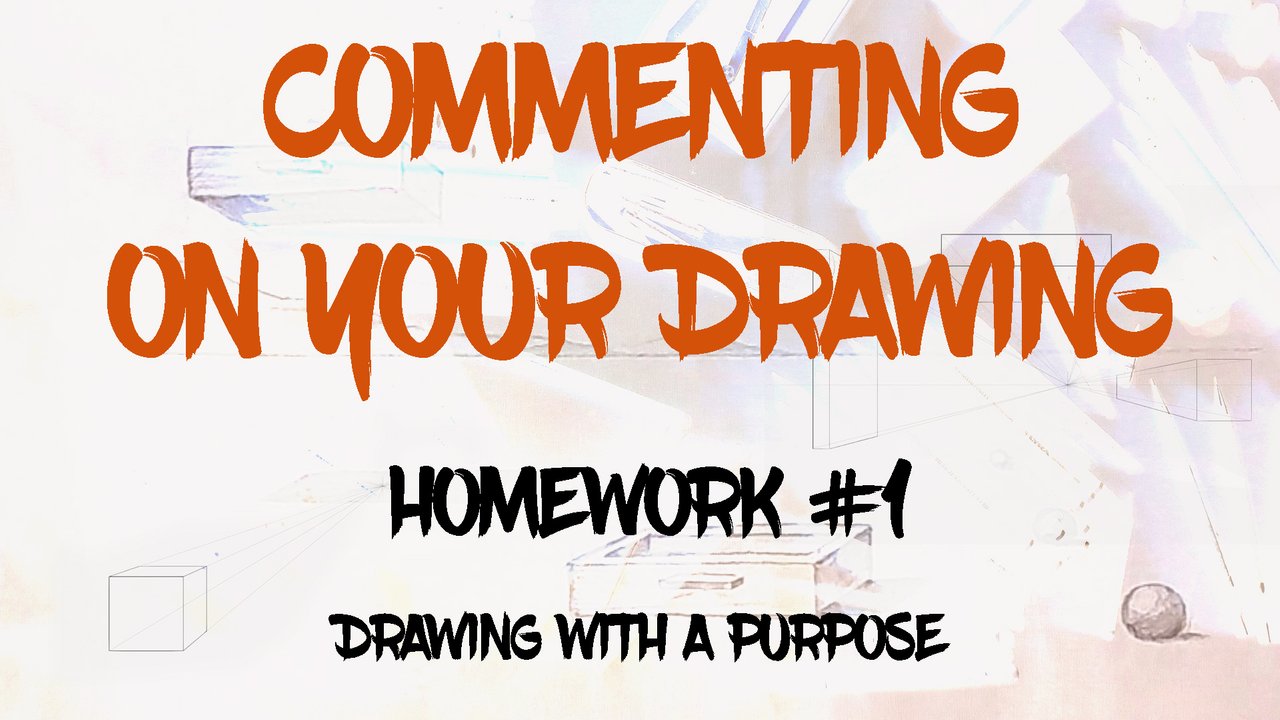
Hi friends!
I'm very pleased to comment on the work of our friend @avibauza (@avibauza/dibujando-como-un-profesional-practica-de-ejercicio-10-tarea-semana-1-por-avibauza-100-power-up) who is carrying out with great enthusiasm all the exercises proposed in lesson10
She was busy trying to replicate all the drawings I showed as samples of drawing techniques from the great masters. Although I said not to copy the drawings but to study their drawing techniques to apply them to your own drawings, @avibauza has made a great effort to make a copy and as she recognizes it, it was difficult to achieve due to a lack of techniques. I think her efforts will pay off when she finds the necessary knowledge in the next few lessons. So go ahead and continue with the same enthusiasm.

Then, @avibauza did the exercise proposed in HW contest 1. I imagine that if she continues to learn and practice the next lessons very soon she will know how to improve her drawings.

However, keeping in mind that by analyzing the exercises you send me, I am not only contributing to helping you overcome your deficiencies in drawing, but it is also helping others to see their own work critically and know what they need to improve, is that I feel me compelled to say certain things:
First, fooling yourself is bad, but trying to fool someone who pretends to help you is even worse.
Honesty is mandatory to be a good professional and you don't become a pro in the craft of drawing by cheating.
Seeing your drawing exercise, it struck me how someone who can't draw a simple couple of boxes well can make a perfect imitation of a female body drawn by Dalí, even the boxes under her feet are in perfect proportion to that body.
So I compared both drawings in Photoshop using transparencies, the one by Dalí and the one by @avibauza and they are identical, even the ellipses drawn on the body are exactly in the same position and size in both drawings, so I have concluded that it is a tracing drawing. It's a shame because you don't learn that way, you only lose prestige. Even more so considering that those drawings weren't part of this homework, it was just a matter of showing a couple of good examples so that you could observe the drawing technique and what you need to learn to draw like an artist.
Second, a professional must not only make a good drawing but he/she must also present it properly, first out of respect for him/herself and second out of respect for those who you show the work.
A poorly presented artistic work gives a bad sign from whoever made that work. I advise you to keep this "detail" in mind in the future. I recommend you to see the presentation of the works of @stef1 and follow his example.
Lastly, I hope you understand that I can't let this pass, otherwise I wouldn't have the necessary qualification to judge the work of the one who drew the best he could trying to learn without cheating.
I wish you a very nice day and good exercise!
Also, thanks to @xpilar for making these initiatives possible.
Here are the links to the previous related posts.
1-Introduction - 2-Introduction - 3-Introduction - 4-Introduction -
5-Introduction - 6-Lesson - 7-Lesson - 8-Lesson - 9-Lesson - 10-Lesson -
11-Masterclass - 12-HW Contest - 13-Lesson 14-Lesson - 15-Lesson -
16-Lesson - 17-HW results - 18-Masterclass - 19-HW Contest - 20-Lesson - 21-Lesson - 22-Lesson - 23-HW results - 24-Lesson - 25-Lesson -
26-Masterclass - 27-HW Contest - 28-Lesson - 29-Lesson - 30-feedback - 31-Lesson - 32-HW results - 33-Masterclass - 34-HW contest #4 - 35-feedback - 36-feedback - 37-feddback - 38-Masterclass - 39-HW Contest #5 -
40-feedback - 41-feedback - 42-lesson - 43 feedback - 44-feedback - 45-HW feedback - 46-lesson - 47-feedback
100% SP (manual transfer to SP)
#club100

